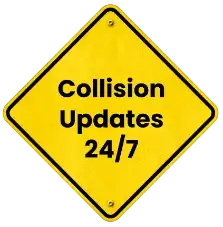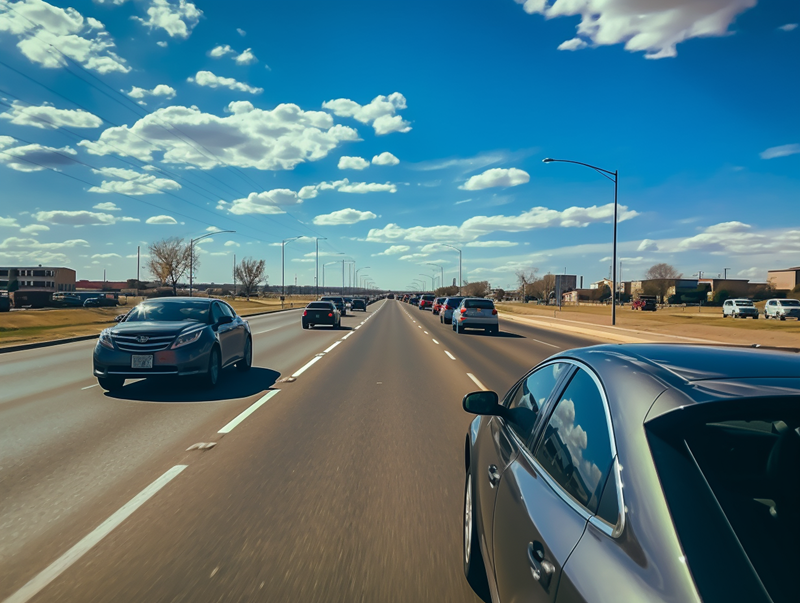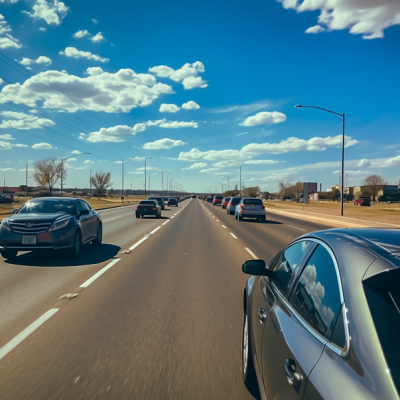
New technologies to improve safety on I-20


Interstate 20 stretches across several states, connecting communities and carrying heavy traffic every day. The highway supports commuters, long-distance travelers, and commercial freight. With so many vehicles sharing the road, accidents remain a serious concern. Crashes cause injuries, property damage, and devastating loss of life.
To address these challenges, technology offers hope. New tools and systems can improve safety, prevent collisions, and protect drivers. This post explores promising innovations that could reduce accidents on I-20.
Smart Infrastructure Upgrades
Smart infrastructure provides real-time insight into traffic conditions. Intelligent Transportation Systems (ITS) use sensors and cameras to monitor highway activity. These tools help officials track congestion and detect hazards immediately. Data from ITS also supports better planning for high-risk areas.
At busy entry and exit points, adaptive traffic signals and ramp metering improve traffic flow. By adjusting timing in real time, these systems reduce bottlenecks and sudden slowdowns. With smoother merging, drivers can avoid rear-end crashes
Lighting improvements also make a difference. Smart roadway lighting adjusts brightness based on conditions. Sensors detect motion and weather changes, creating better visibility at night and during storms. Bright, consistent lighting reduces the risk of collisions caused by poor visibility.
Connected Vehicle Technology
Connected vehicle technology allows cars and trucks to share critical information. Vehicle-to-Vehicle (V2V) systems broadcast location, speed, and direction. If another car brakes suddenly or changes lanes unexpectedly, drivers receive an alert. This communication can help to reduce multi-car pileups.
Vehicle-to-Infrastructure (V2I) technology links vehicles with roadway systems. Cars can receive instant updates about construction zones, lane closures, or hazardous conditions. On I-20, where weather and congestion change quickly, this technology improves driver awareness.
The combination of V2V and V2I creates safer traffic patterns. Drivers respond faster, avoid hazards, and keep accidents from spreading. These systems work especially well in heavy traffic, which I-20 sees daily.
Advanced Driver Assistance Systems (ADAS)
Many vehicles now come equipped with Advanced Driver Assistance Systems. These tools support drivers and prevent human error. Lane departure warnings alert drivers who drift out of their lane. Blind-spot monitors detect vehicles hidden from view, which prevents dangerous merges. Adaptive cruise control maintains safe distances automatically.
Automatic emergency braking reacts faster than a human driver. It prevents rear-end crashes caused by sudden slowdowns. These systems help reduce collisions on crowded stretches of I-20, especially during rush hour.
When used together, ADAS features create safer journeys. Drivers remain more alert, and accidents caused by distraction or fatigue become less common.
AI and Predictive Analytics
Artificial intelligence (AI) plays an important role in highway safety. AI can analyze years of crash reports and traffic data. Predictive models identify patterns and highlight dangerous sections of I-20. Officials then use this insight to deploy patrols or add safety measures.
AI also predicts roadway maintenance needs. For example, it can forecast when potholes or faded lane markings will require repairs. Fixing issues early prevents accidents caused by unsafe road conditions.
Law enforcement also benefits from AI. By analyzing traffic trends, AI can guide patrols to areas with high crash risk. By assuming this proactive approach, accidents can be reduced before they occur.
Autonomous and Semi-Autonomous Trucking
Commercial trucks make up a large share of traffic on I-20. With long hours and heavy loads, truck drivers face high risks of fatigue. Semi-autonomous and autonomous trucking systems help reduce these risks.
Self-driving technology enforces consistent speed, lane discipline, and safe braking. Automated trucks also use sensors to detect nearby vehicles and obstacles. These systems reduce human error, one of the main causes of truck crashes.
Legal and regulatory challenges remain. Lawmakers must decide how to manage liability when autonomous systems fail. Still, the potential for fewer accidents makes this technology worth exploring.
Emergency Response Innovations
Faster emergency response saves lives after serious accidents. When an accident occurs, automated crash detection systems instantly alert authorities. This reduces fatality rates because emergency teams can reach victims sooner
Drones also improve response times. They fly over accident scenes and send live video to responders. With this information, emergency crews plan traffic control and medical care more effectively.
Better response systems not only save lives but also clear accidents faster. Shorter delays reduce the chance of secondary crashes, which often happen when traffic backs up.
Legal Considerations and Public Policy
Technology raises important legal questions. When automated systems fail, determining liability becomes complex. Should the driver, manufacturer, or software developer take responsibility? Courts and lawmakers must address these issues.
Privacy also matters. Systems that collect data about drivers must protect personal information. Balancing safety with privacy requires careful policy choices.
Government support is vital for progress. Funding smart infrastructure and regulating autonomous vehicles require collaboration between state and federal agencies. Strong laws encourage innovation while ensuring accountability.
Community and Driver Education
Without driver support, not even the most advanced technology can succeed. Education helps people understand how to use new systems safely. Public campaigns can highlight I-20 accident hot spots and teach drivers about ADAS features.
Mobile apps also improve awareness. Apps can warn drivers about high-risk areas, crashes ahead, or changing weather conditions. With quick alerts, drivers have more time to react safely.
Driver training programs should focus on modern technology. To prevent confusion and build confidence, drivers should be taught how to interact with semi-autonomous systems.
Contact an Experienced Attorney
Despite advancements in technology, accidents on I-20 continue to cause serious harm. If you or a loved one has been injured in a highway crash, legal support can make a difference. An experienced I-20 car accident lawyer can explain your rights and pursue compensation for medical bills, lost wages, and pain and suffering
Do not face the aftermath of an accident alone. We will review your case, guide you through the legal process, and fight to protect your future.
